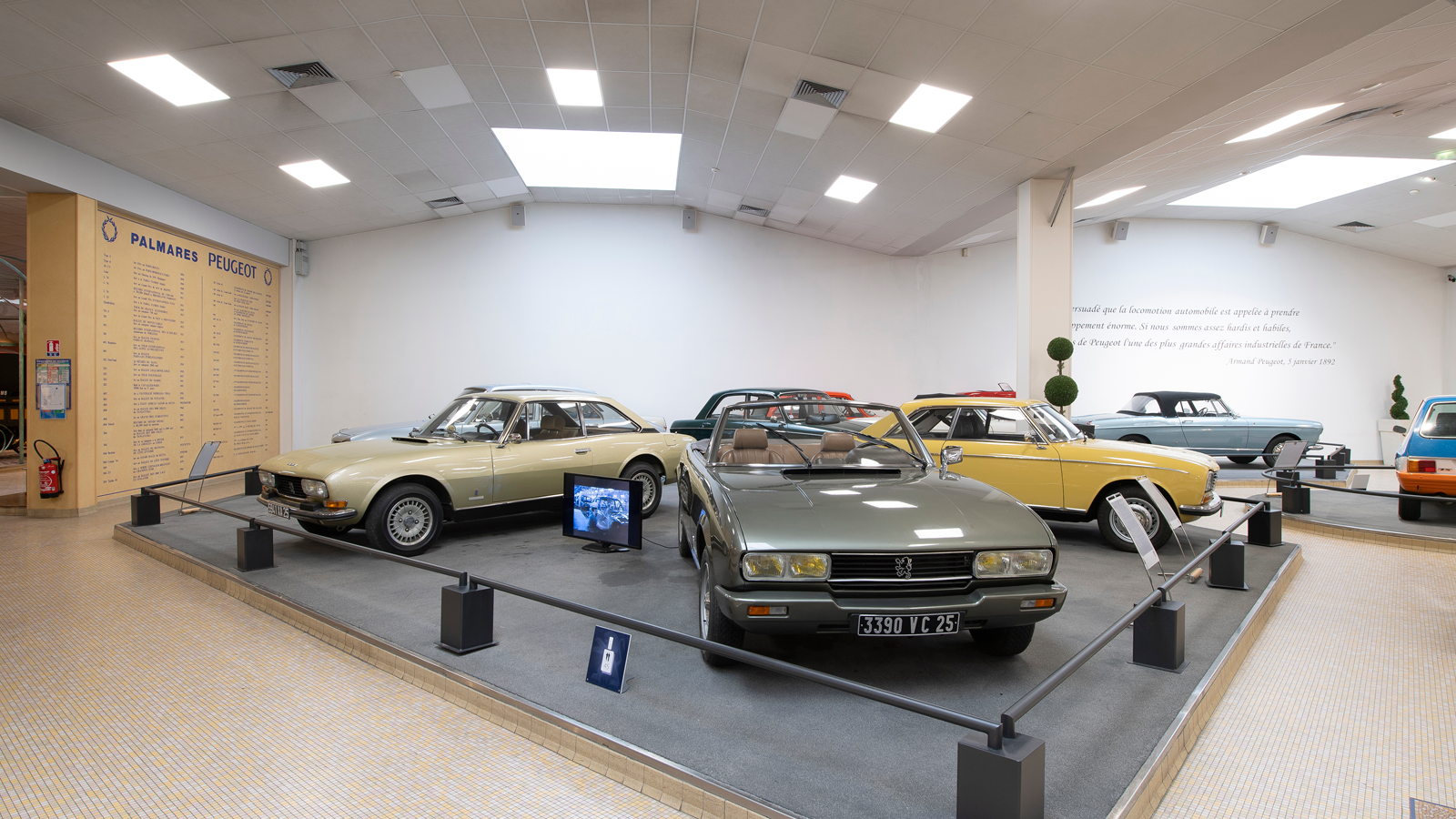

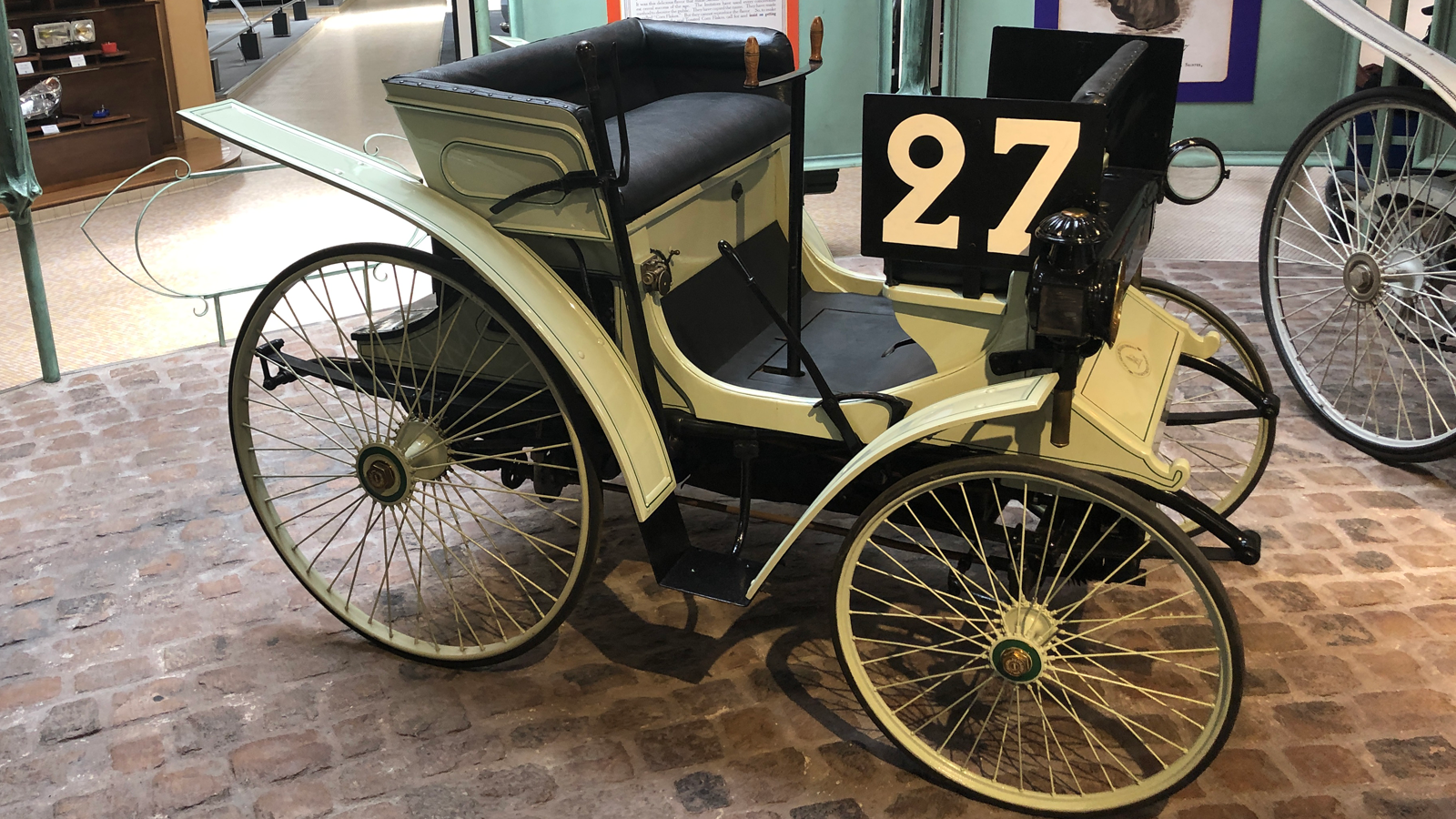
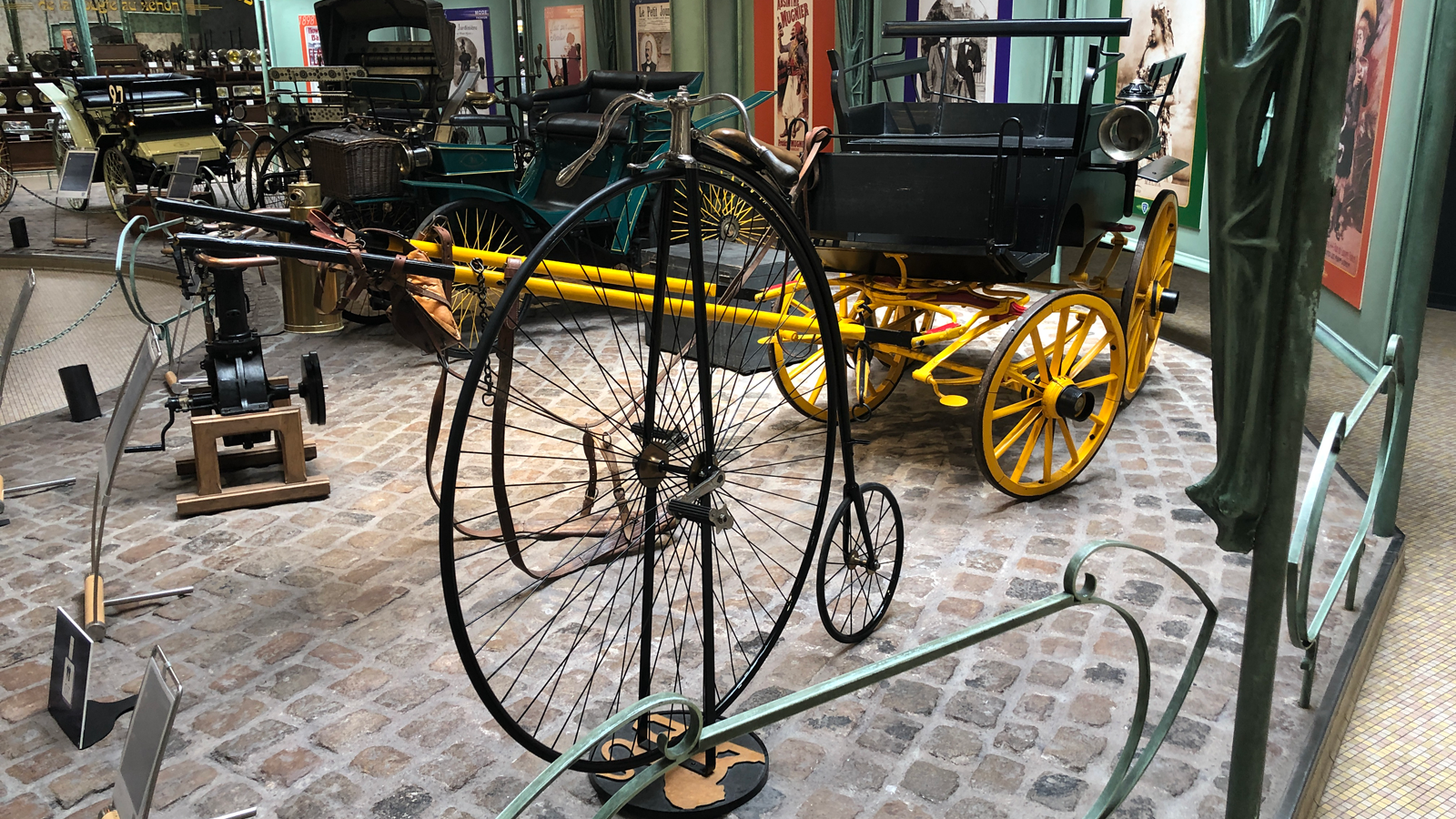
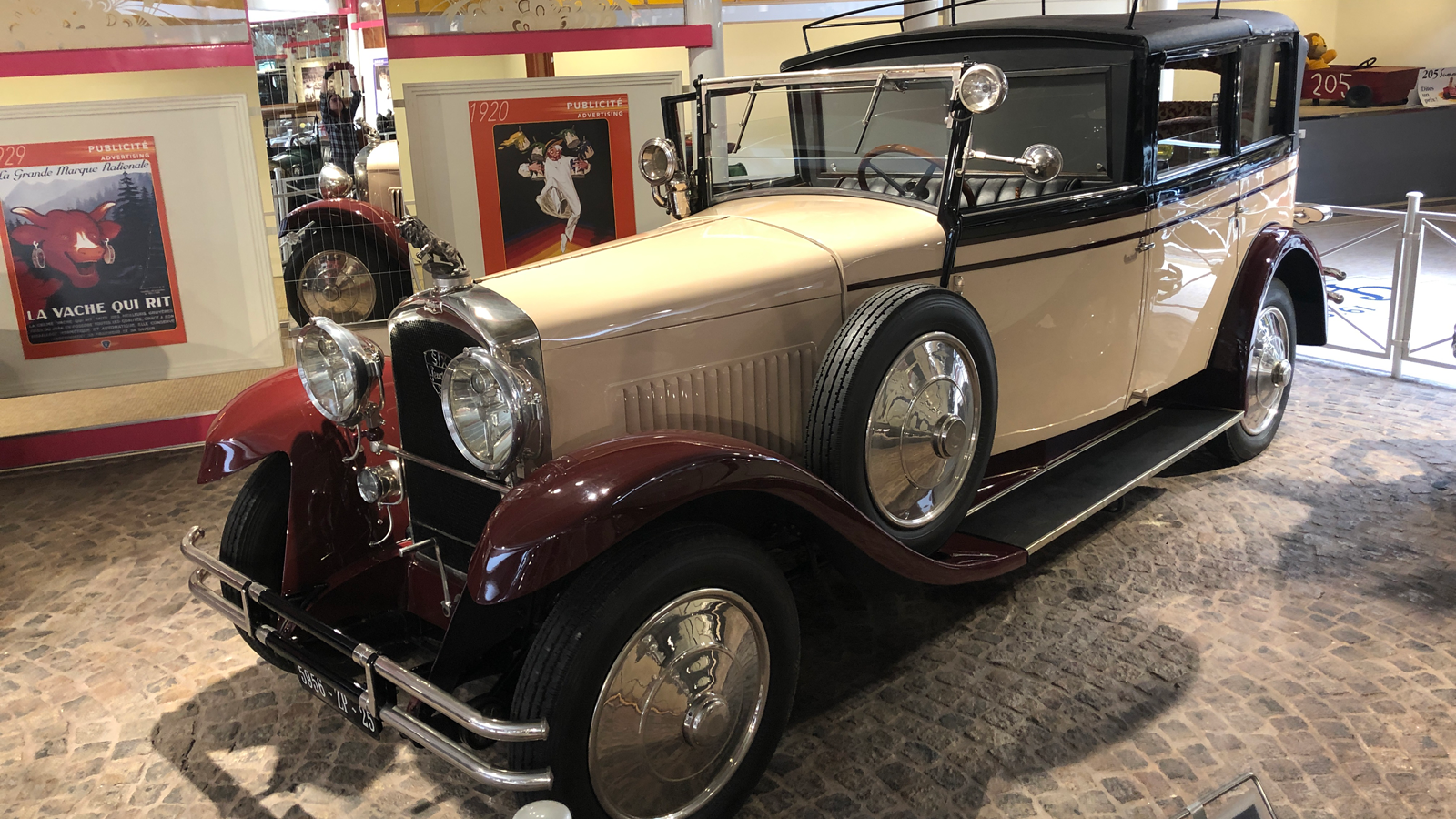
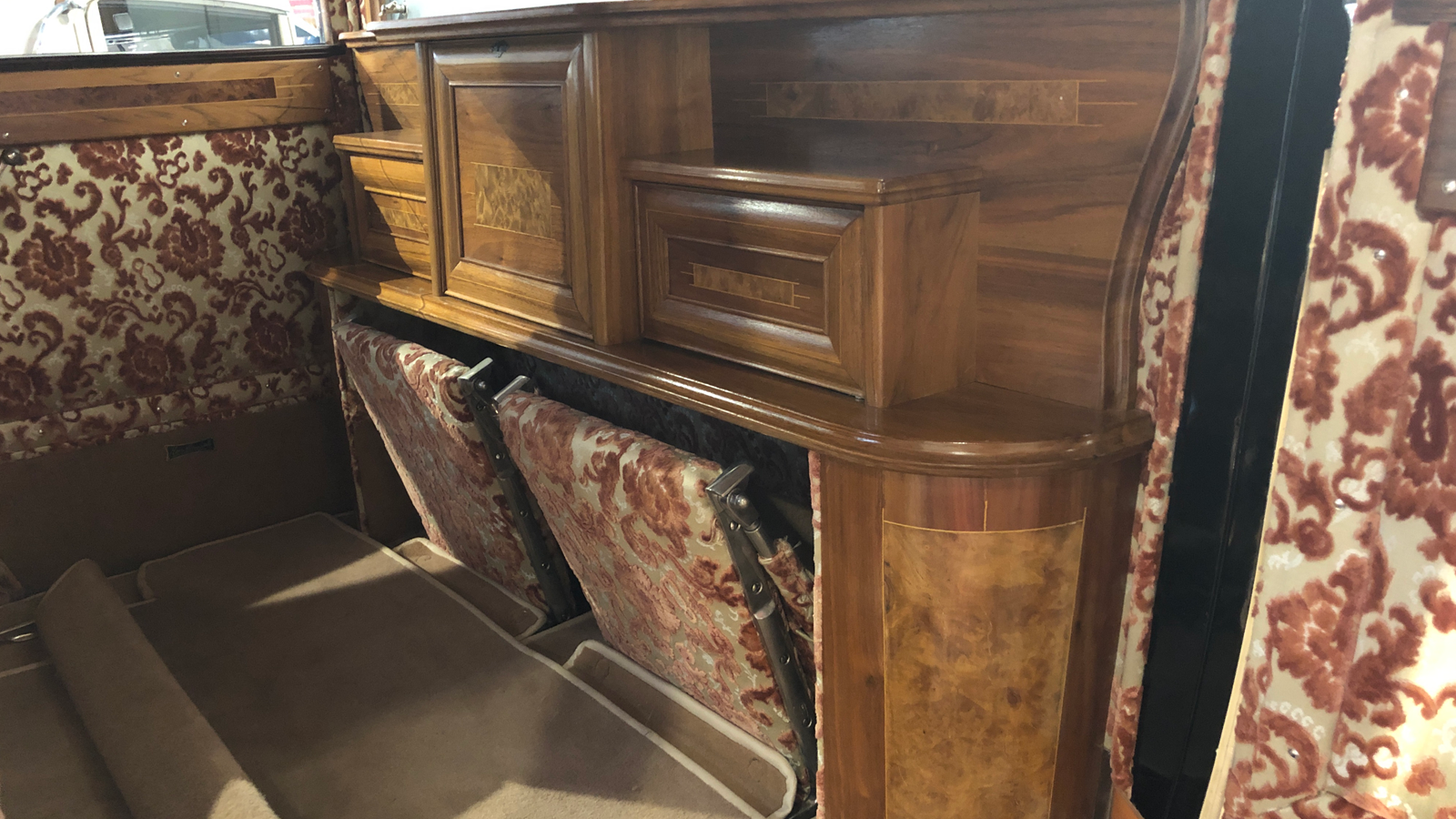
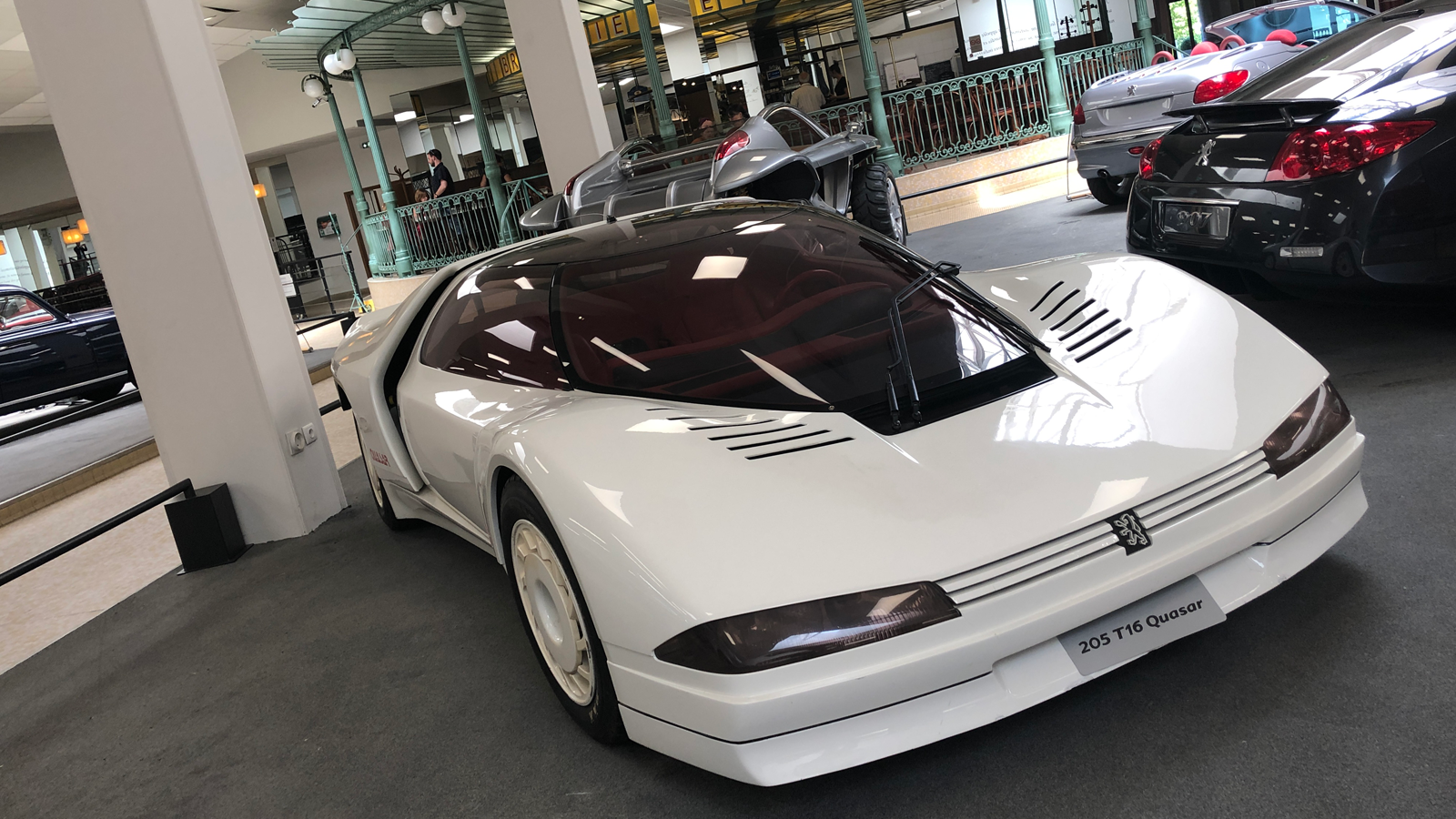
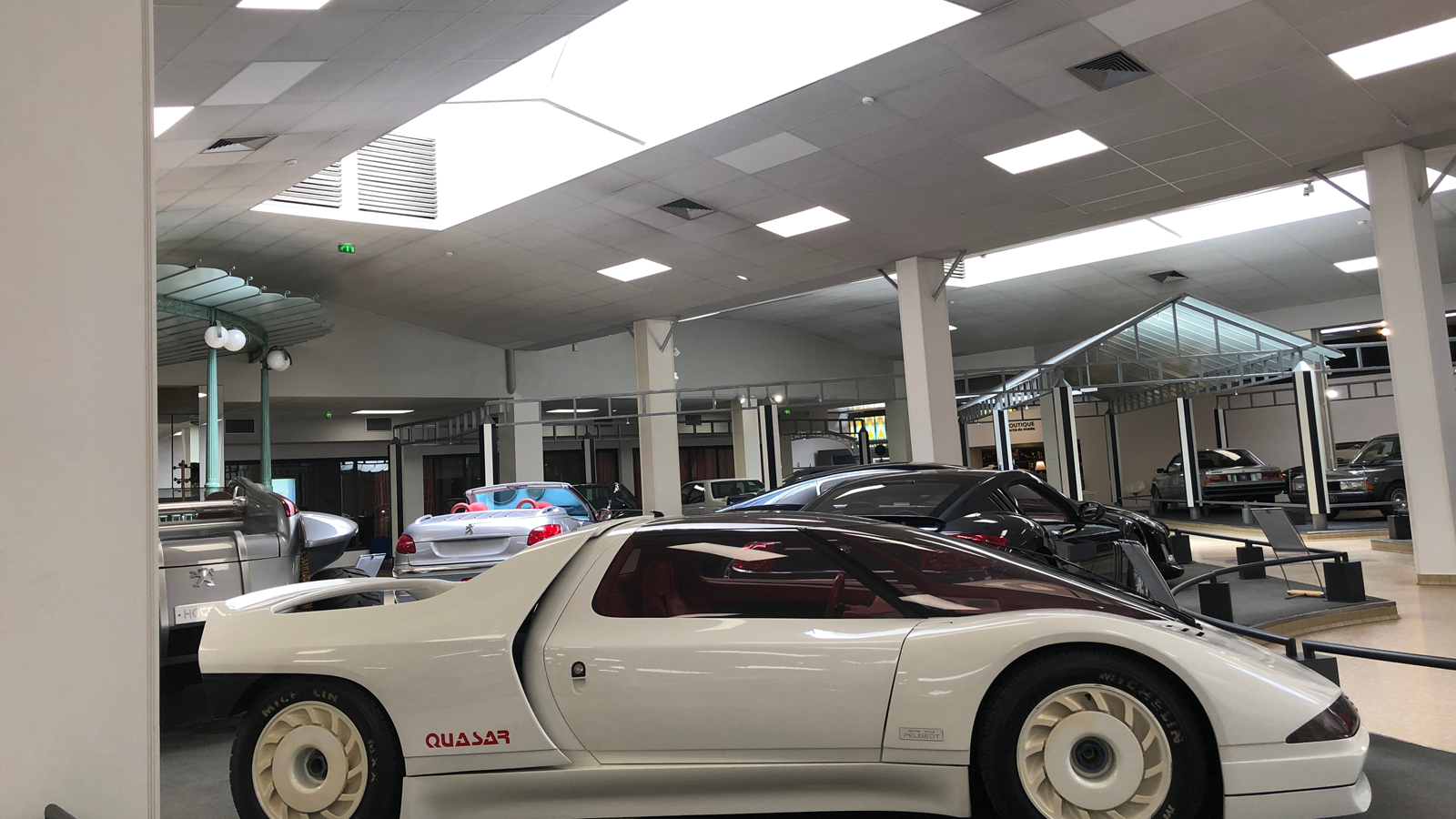

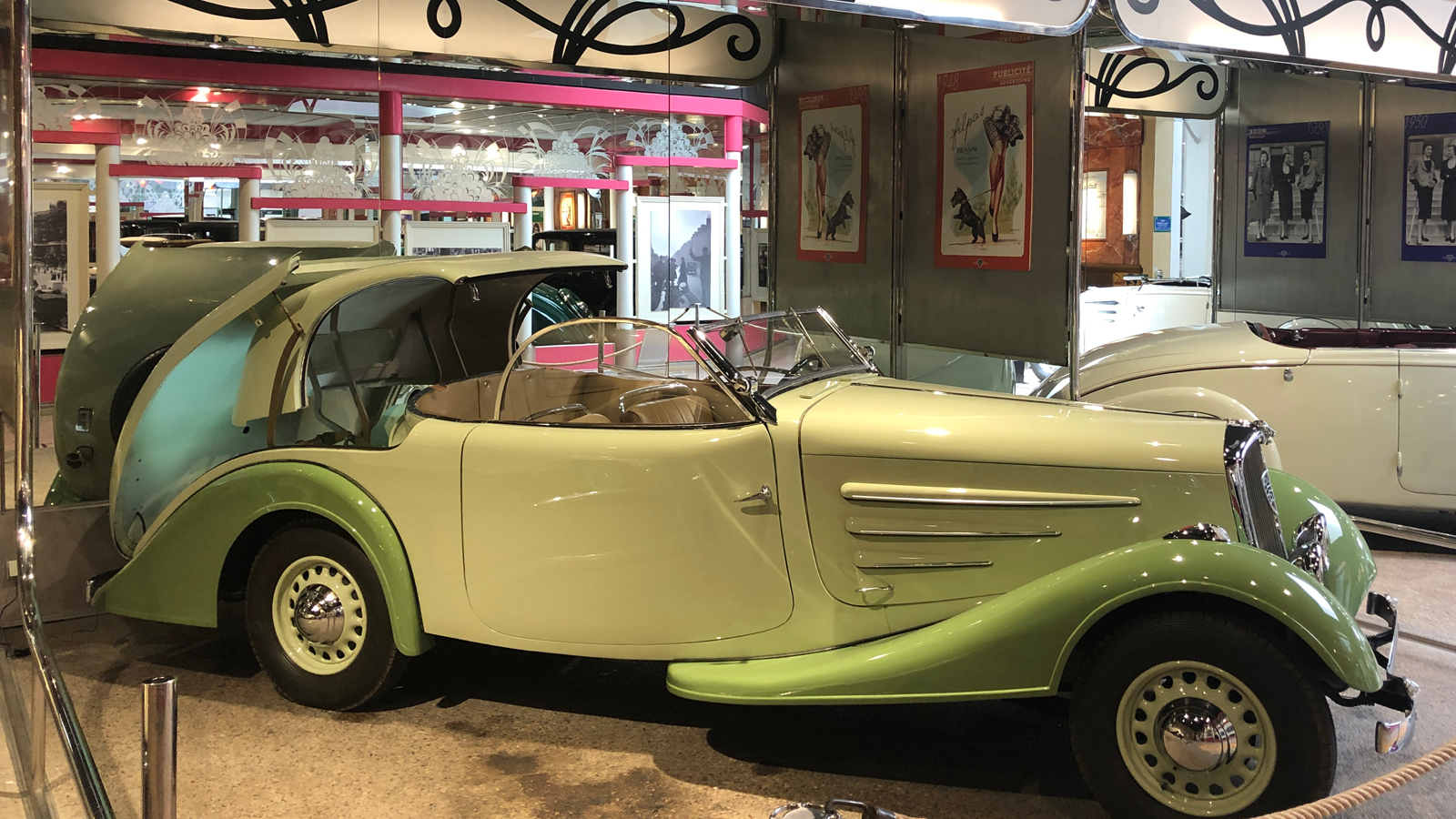

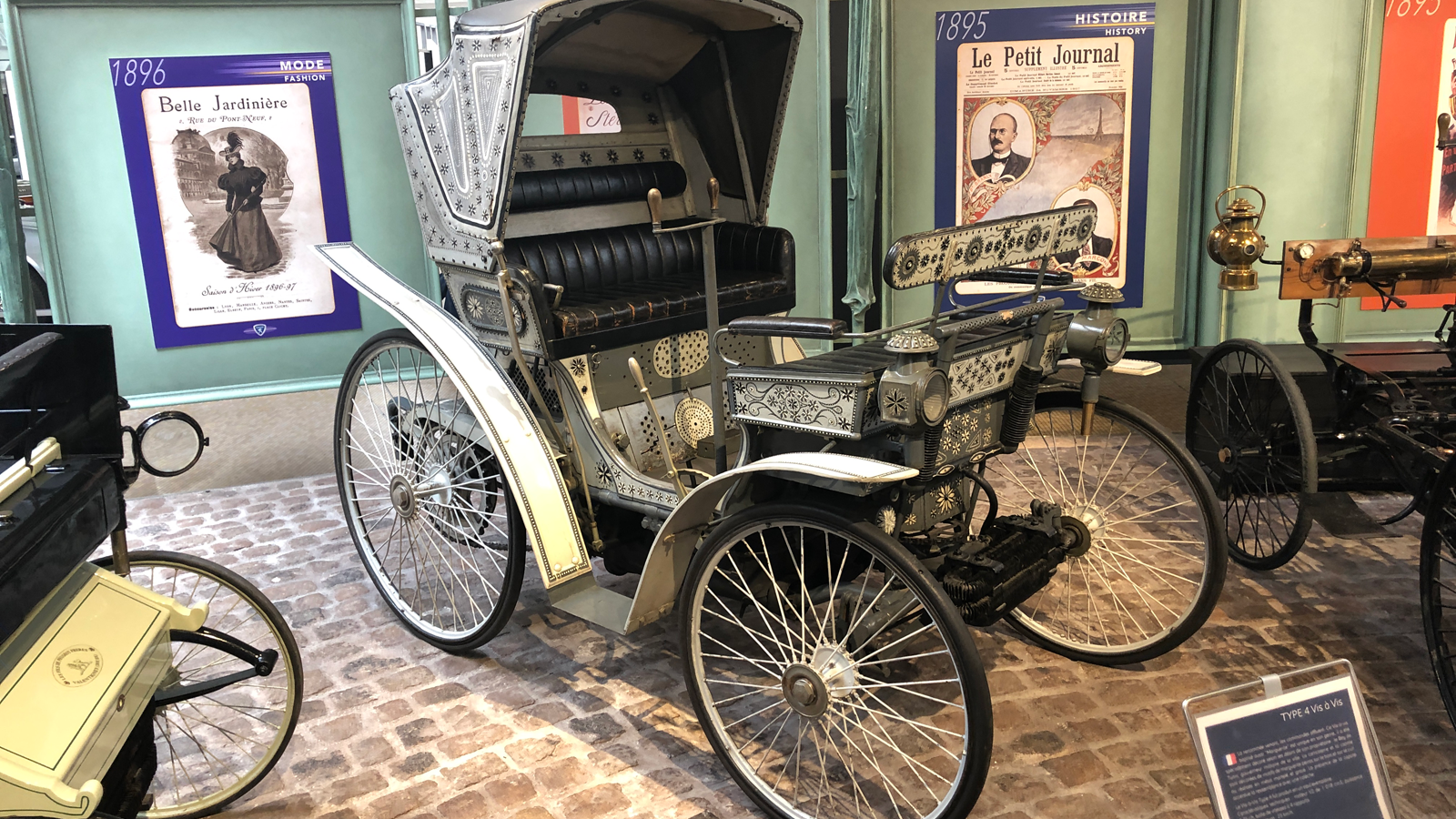
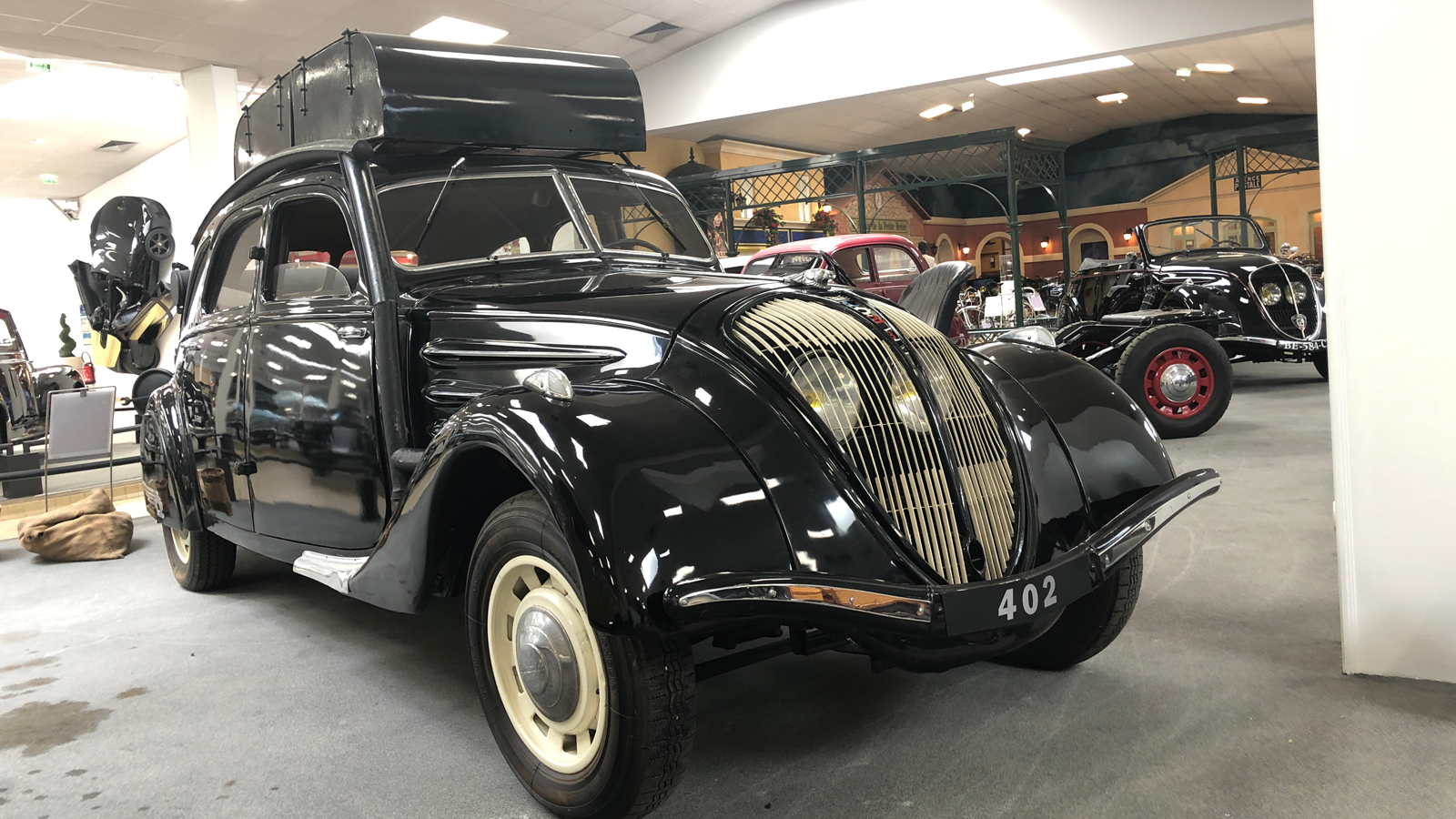
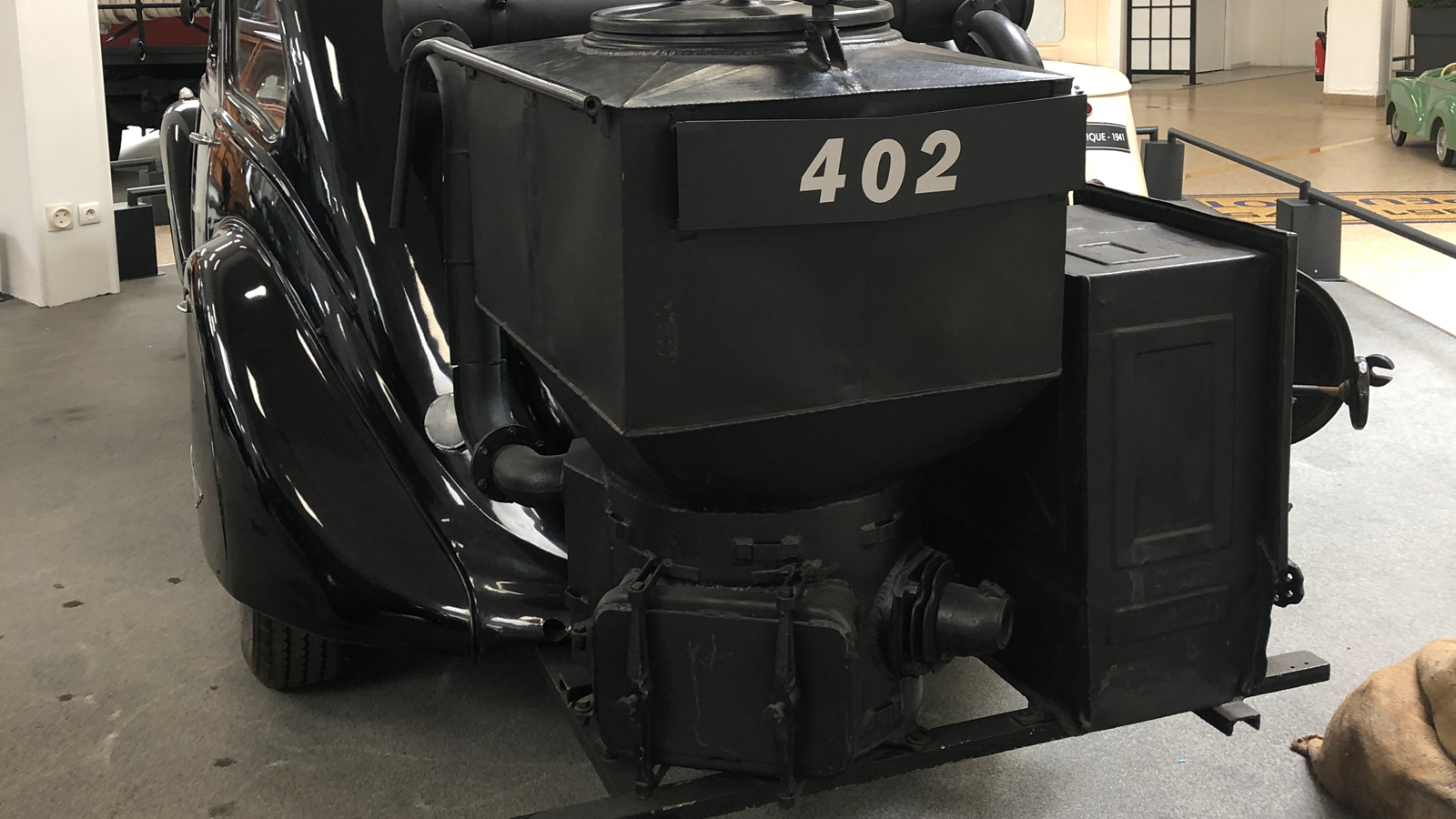
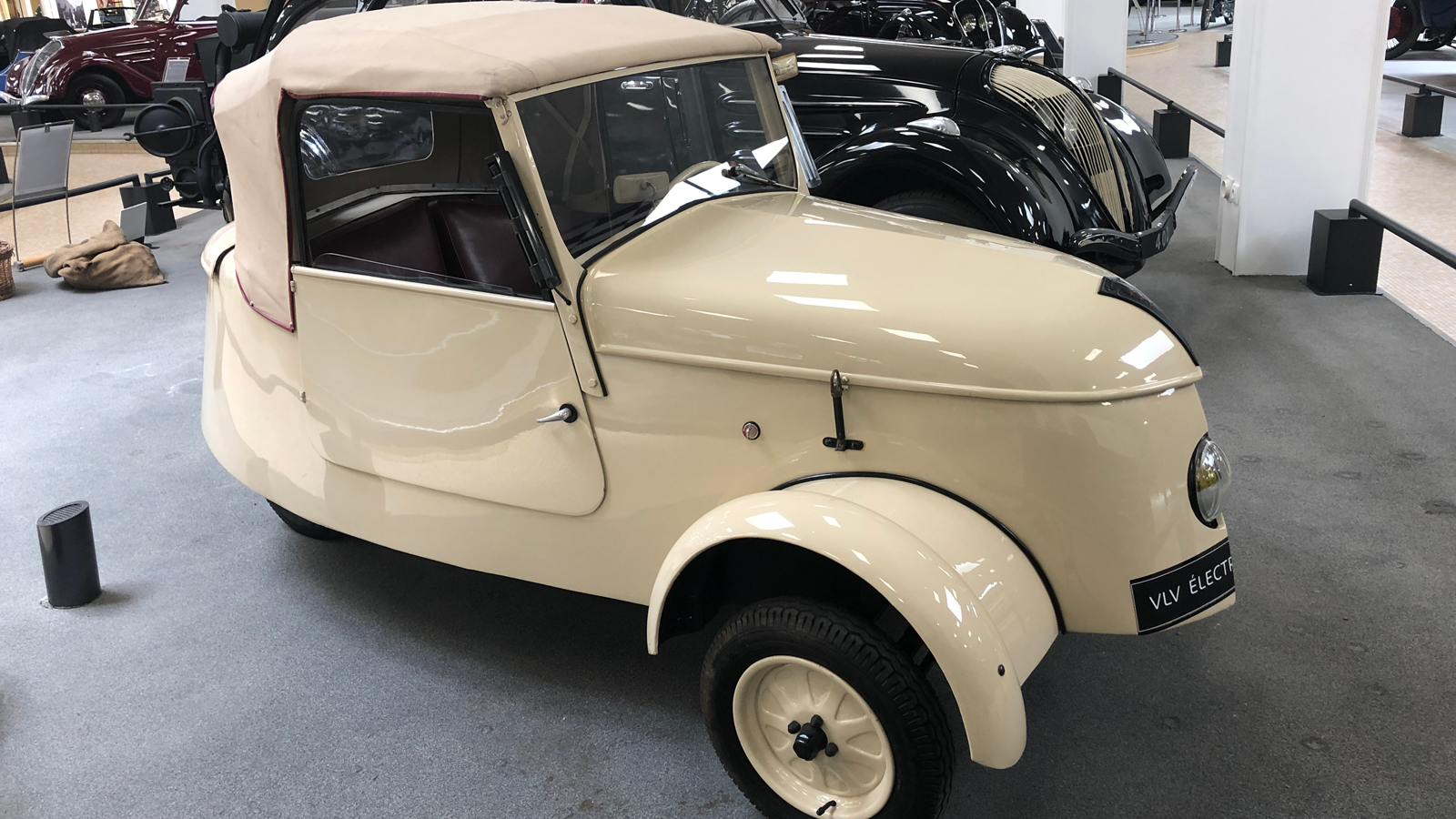
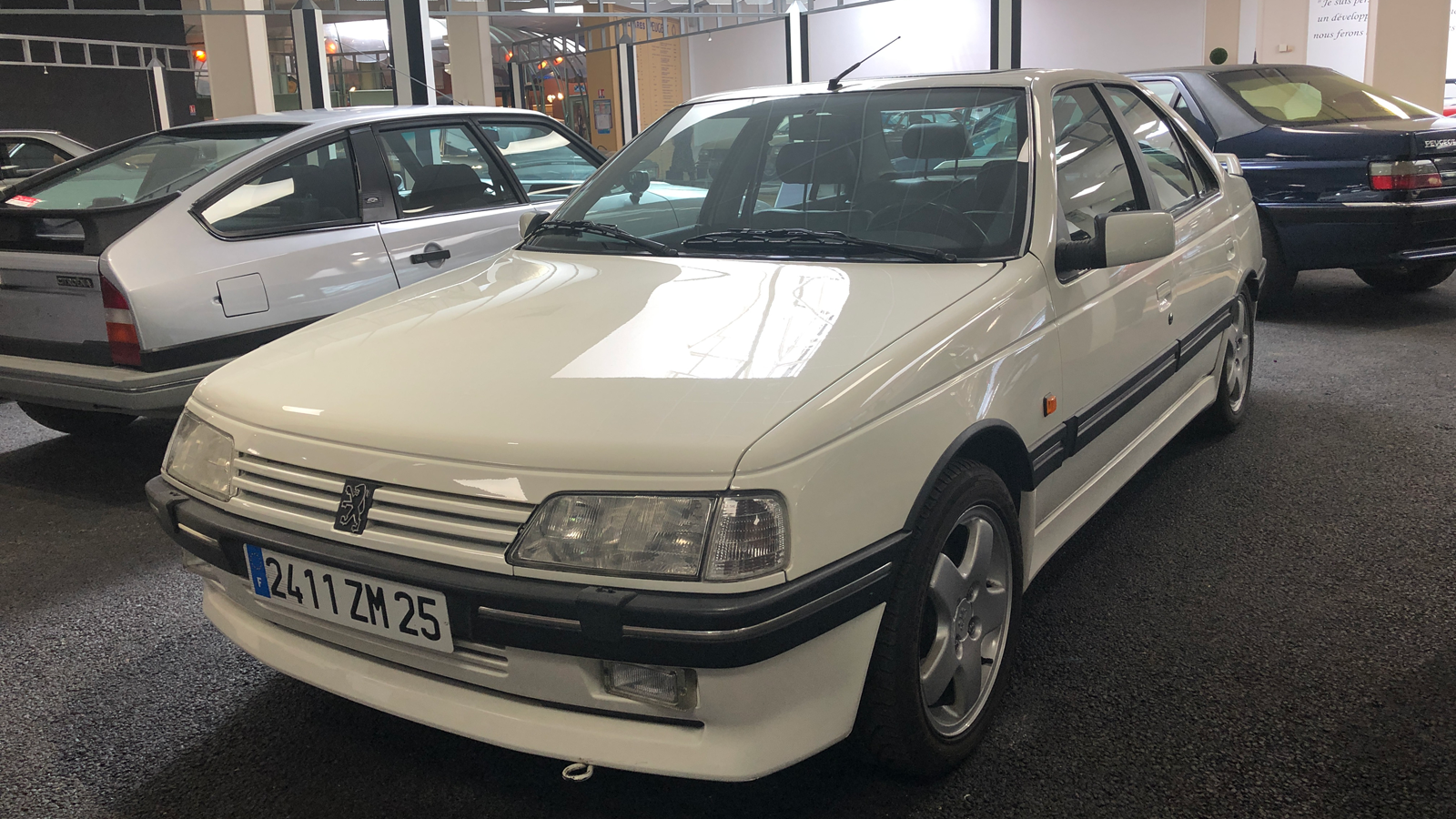
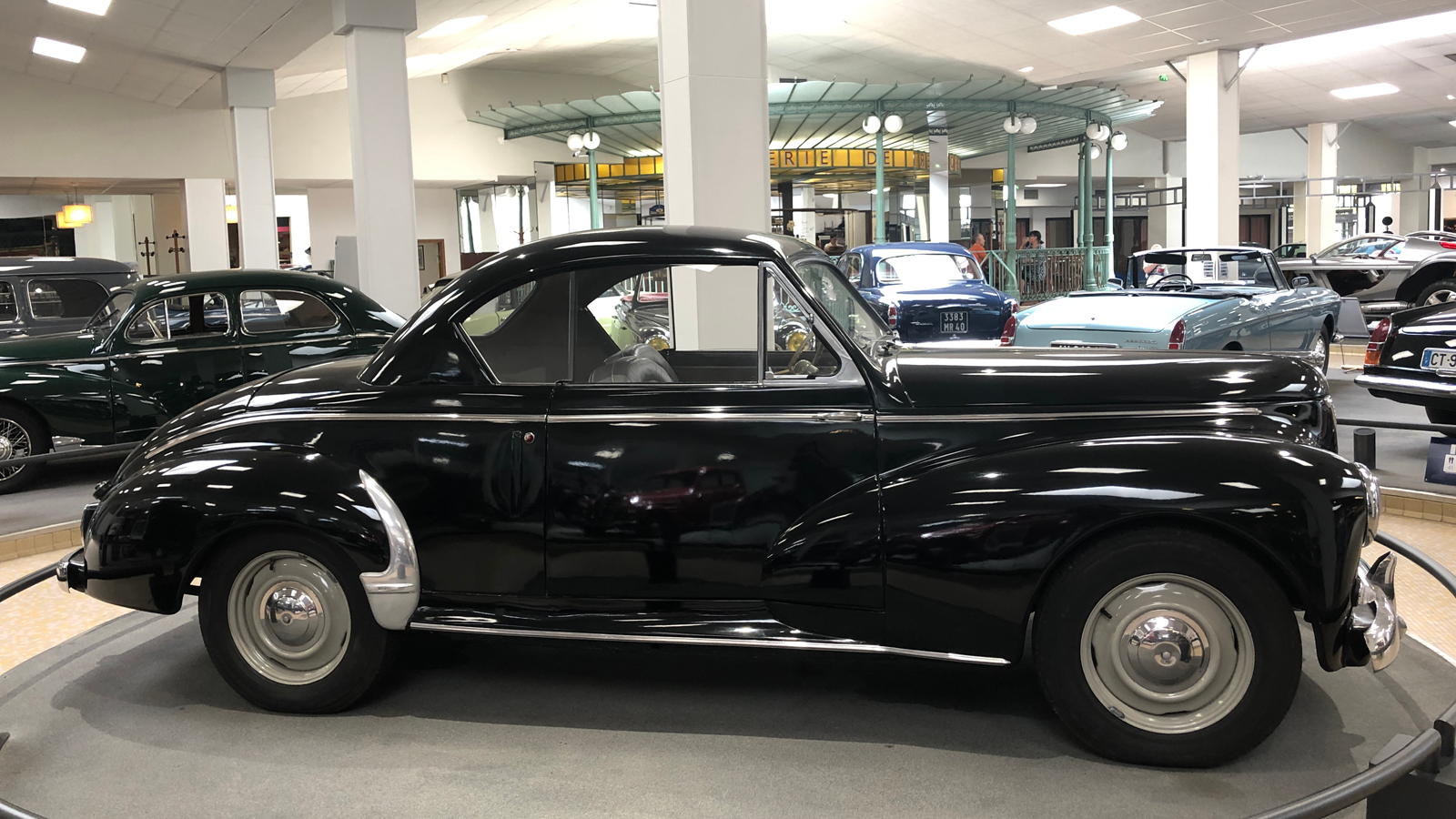
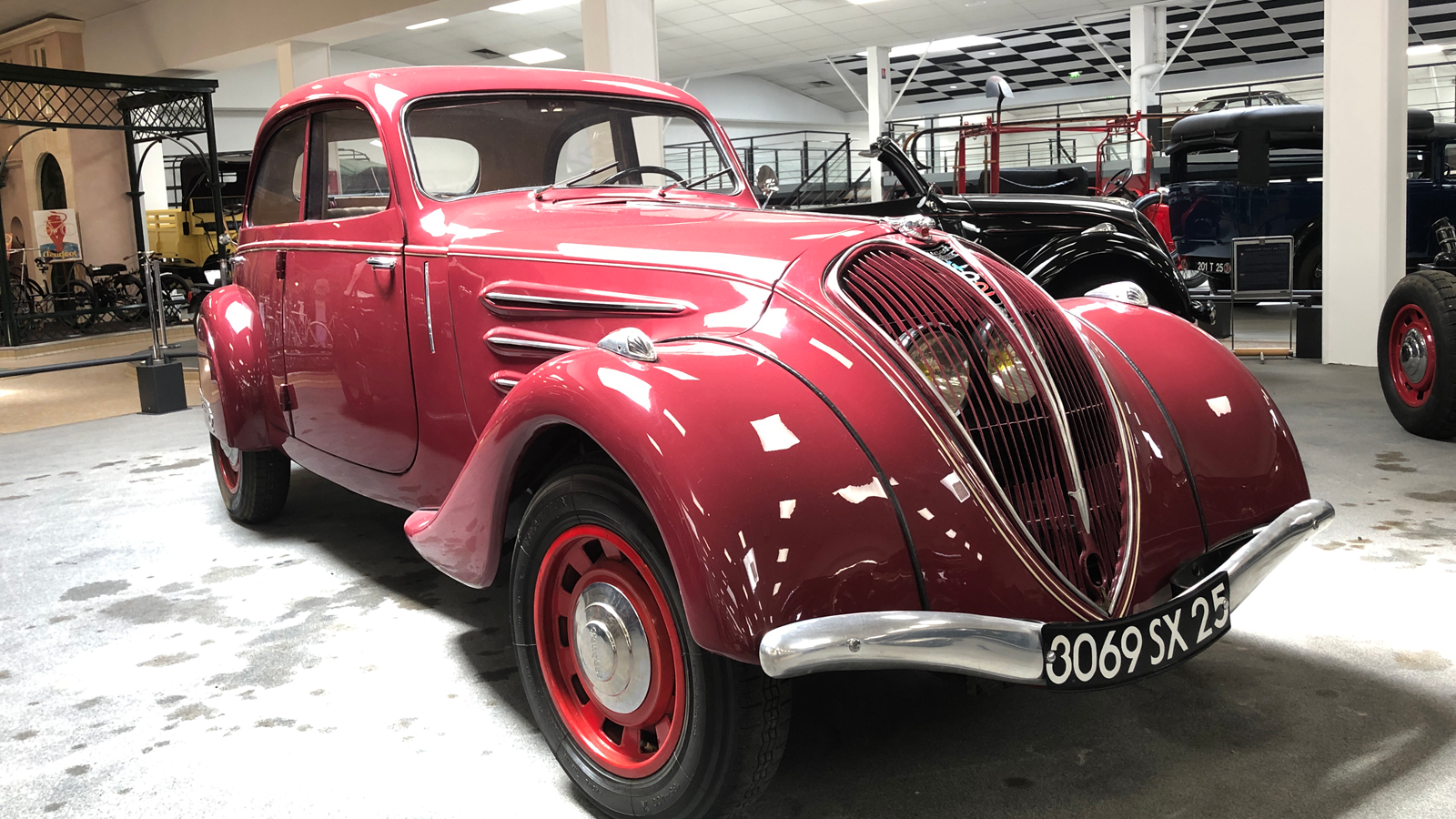
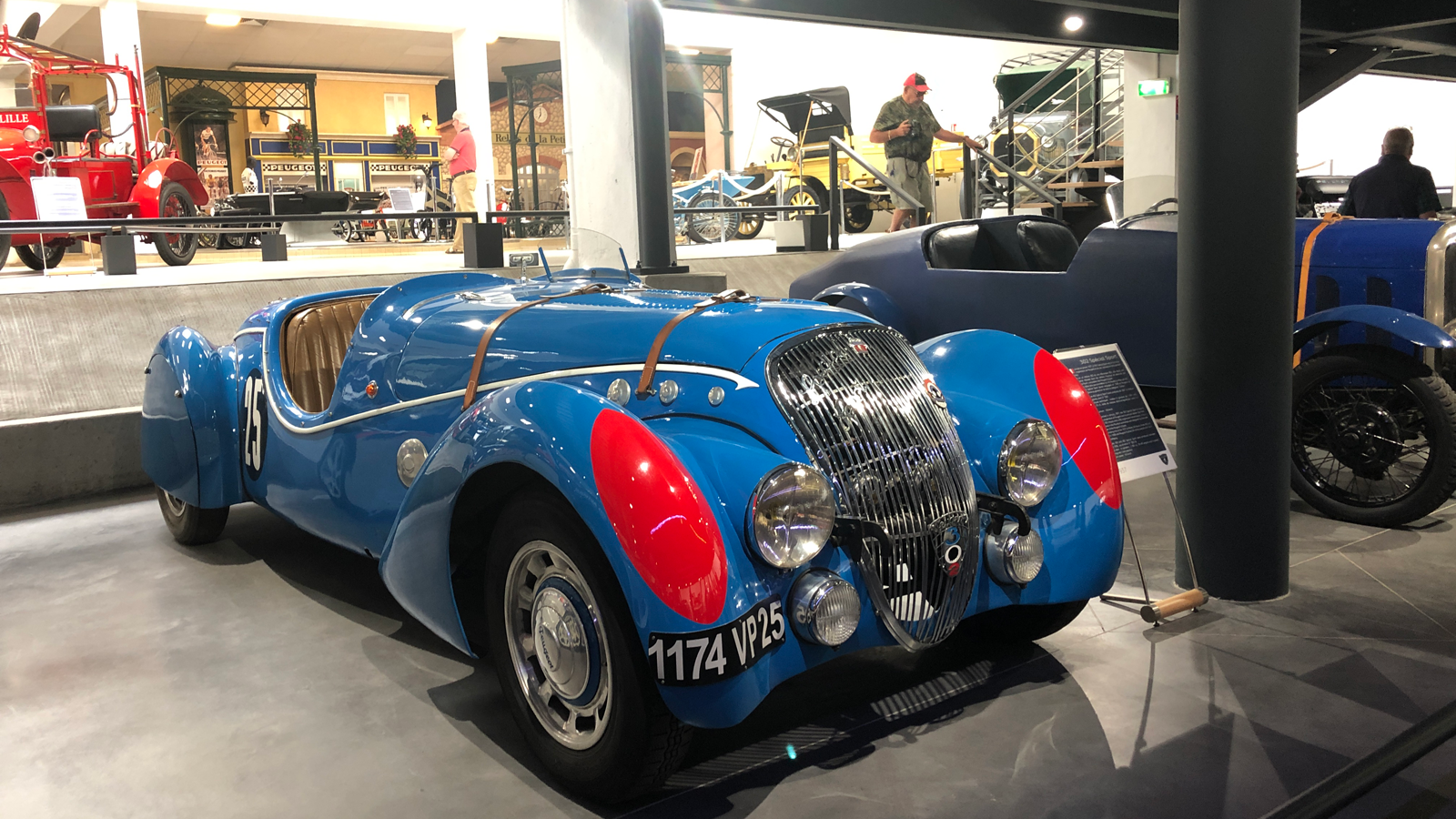
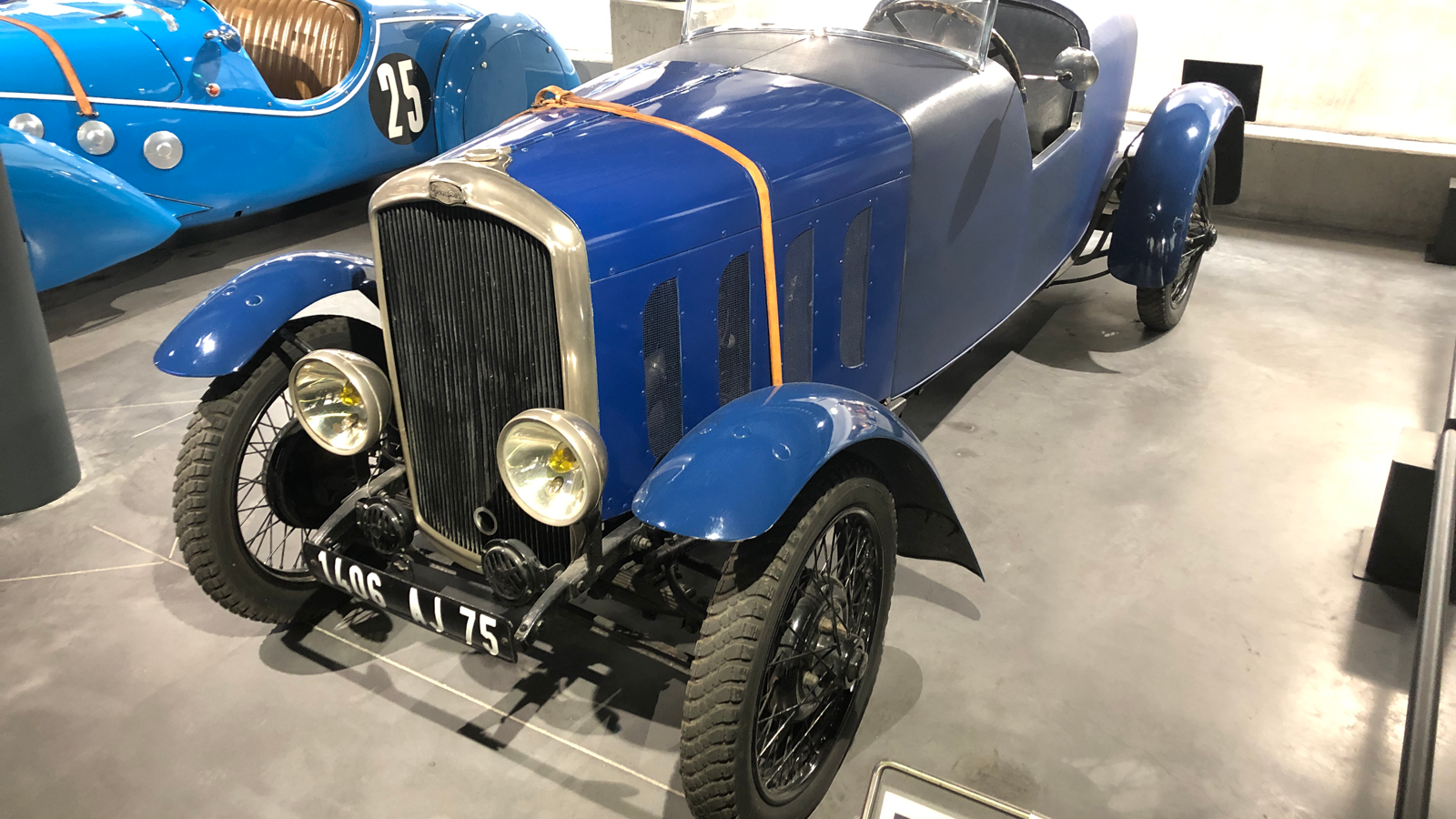
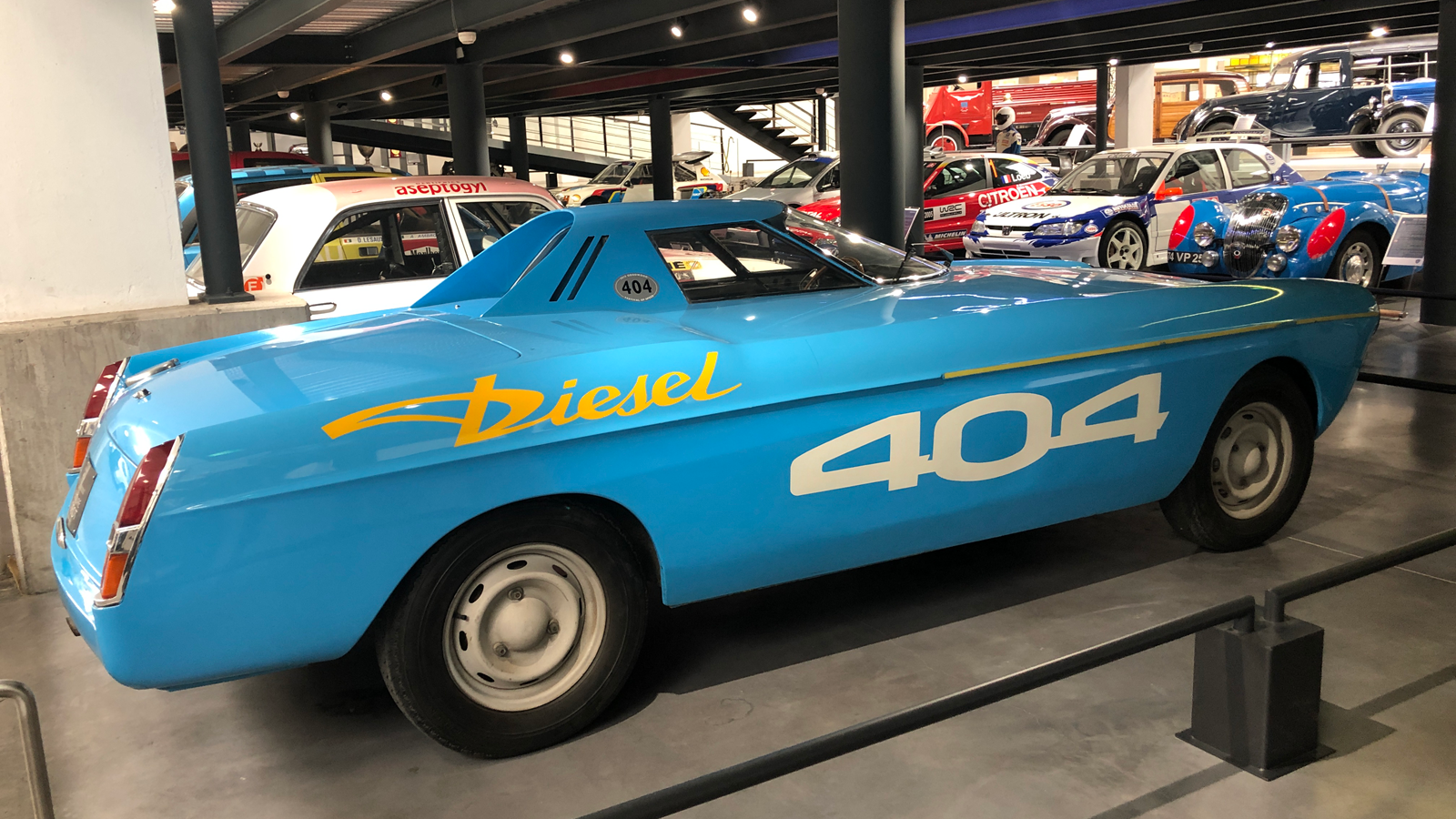
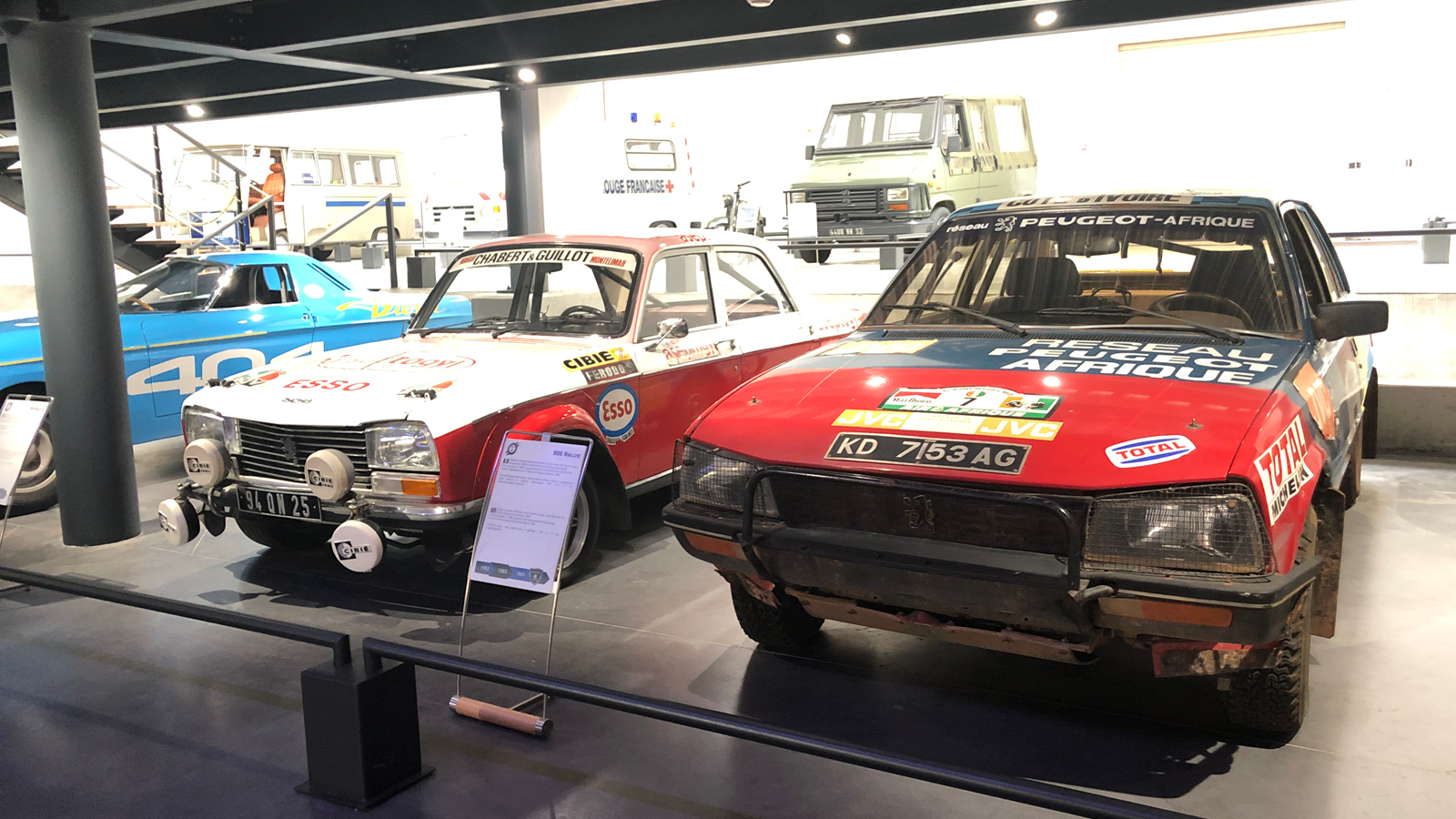
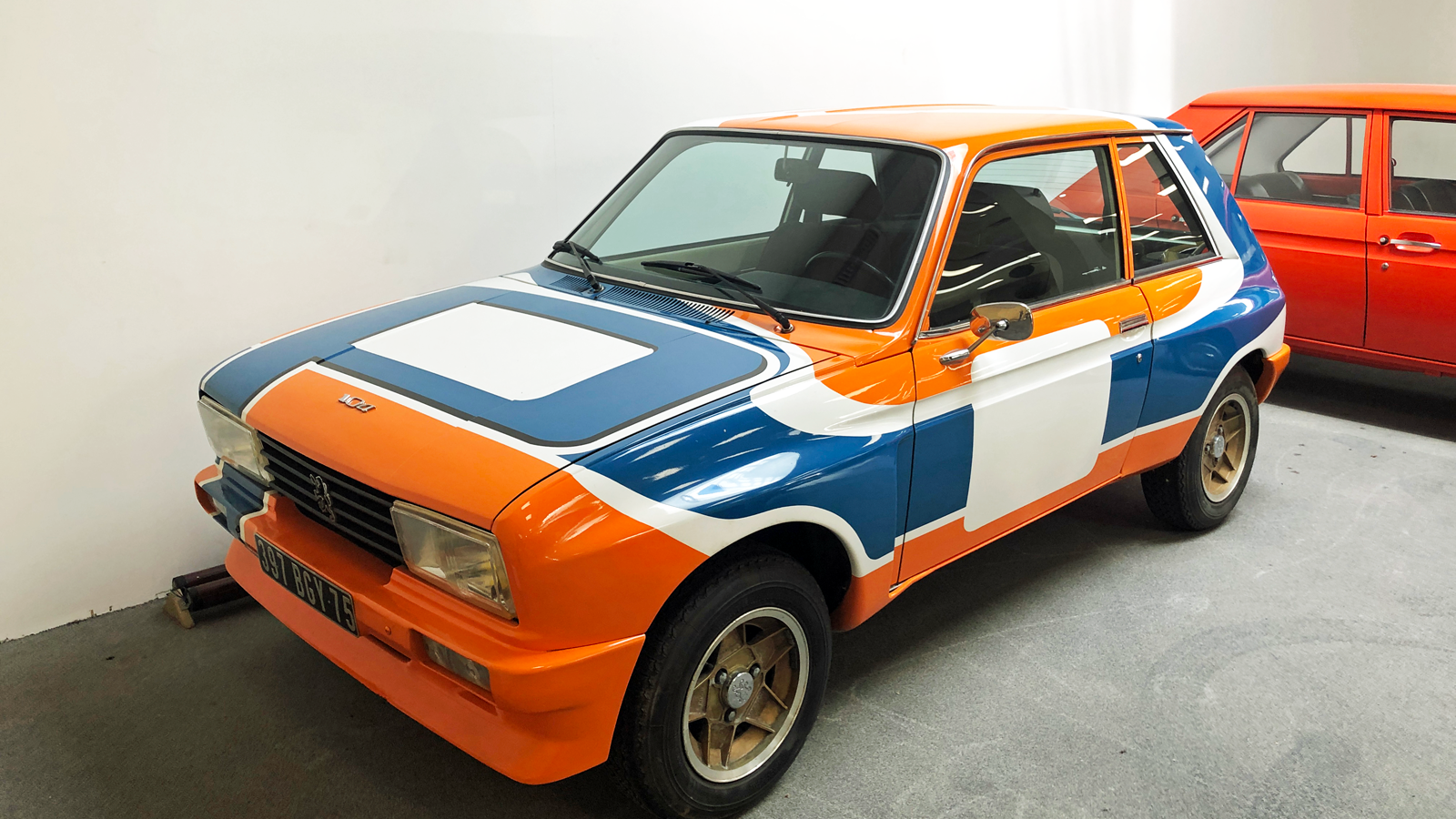
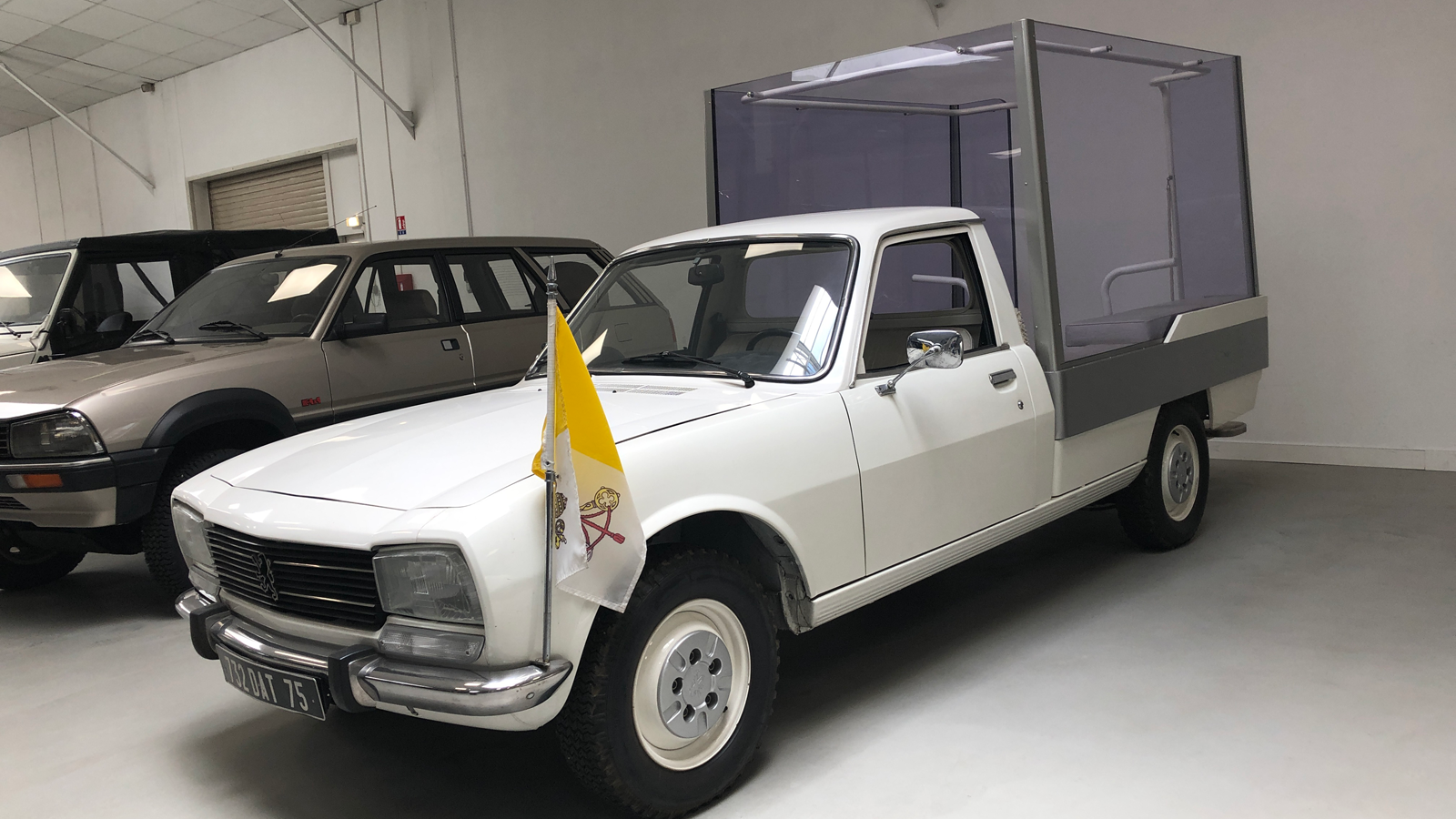
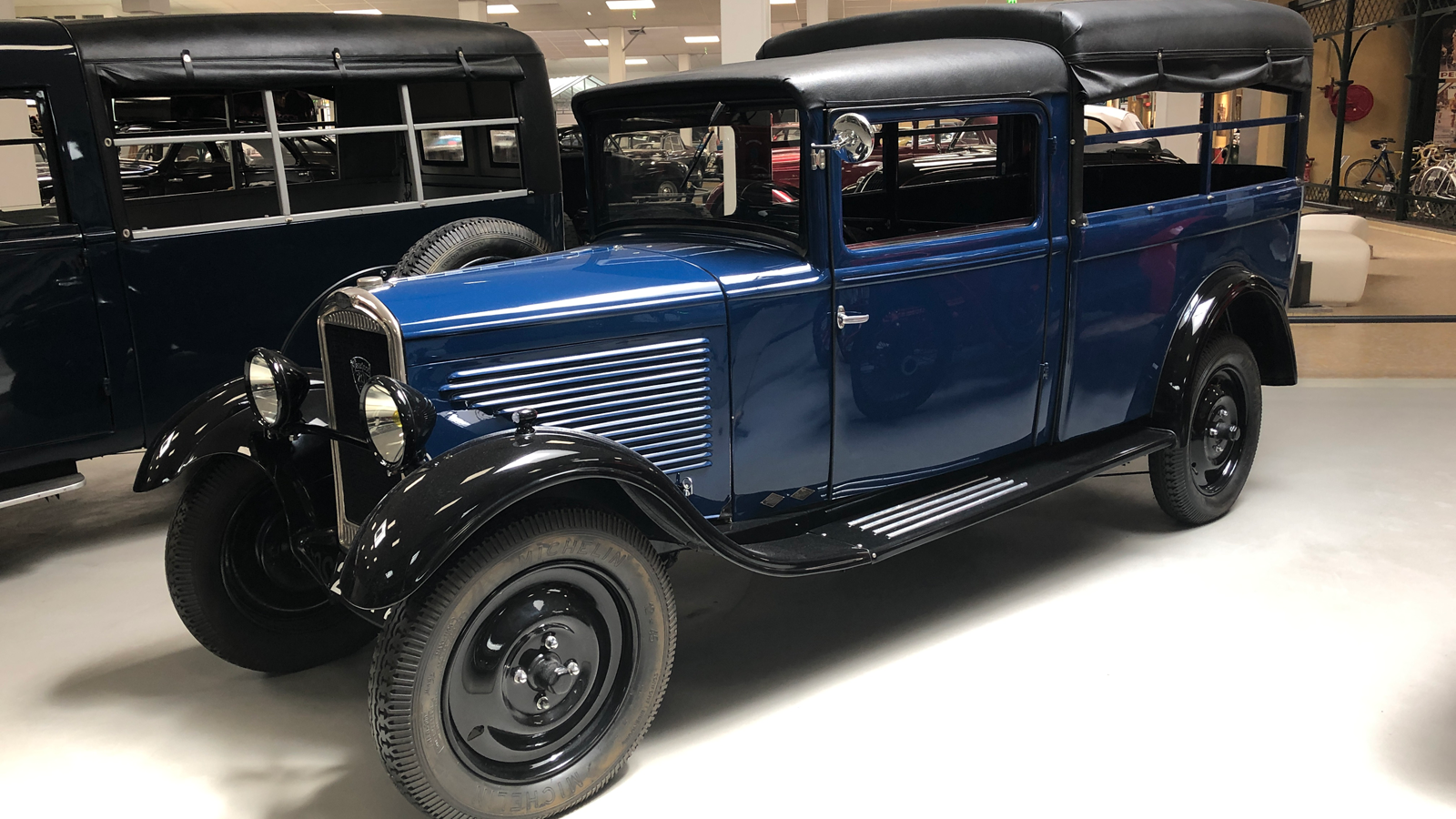

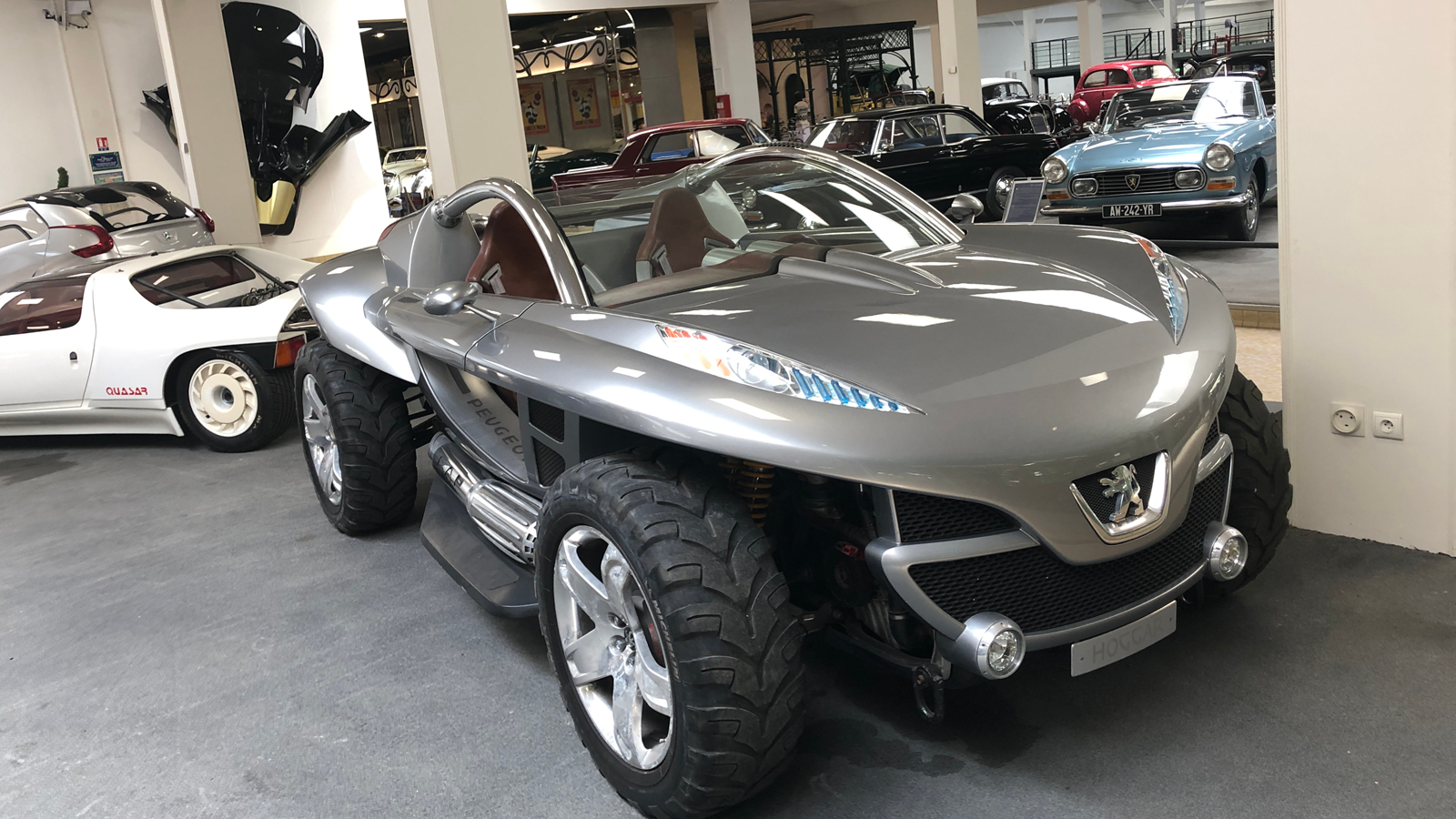
Peugeot perfection
Let’s remember better times with a tour of Peugeot’s fantastic museum.
It’s packed with a jaw-dropping array of models – ones you know and love, ones you’d forgotten and ones you never knew existed in the first place!
You’ll find the Musée de l’Aventure Peugeot across the road from the company’s factory in Sochaux, France, and the ever-changing collection inside is a delight for any car lover.
Not that it’s only cars inside: Peugeot’s history making pepper mills, dishwashers, lights, washing machines, crinolines and more – yes, really – is also documented here.
But we’re all about the cars, so click on and get stuck in.
1986 Peugeot 205 T16 Group B
Let’s start with something enormously evocative and instantly recognisable – Peugeot’s Group B rally car monster.
T16s claimed the World Rally Championship for manufacturers in 1985 and ’86, and this car, an Evolution 2, was campaigned by Juha Kankkunen and co-driver Juha Piironen in 1986, en route to that year’s drivers’ and manufacturers’ crowns.
1893 Peugeot Type 5 Voiture à 2 Places
Let’s stick with competition cars, but rewind to this, the car that won the world’s first motor race.
Back in 1894 Parisian daily newspaper Le Petit Journal organised a ‘horseless carriage competition’ between Paris and Rouen.
There were 21 participants and this car, driven by engineer Louis Rigoulot, finished joint first with a Panhard and Levassor.
1882 Grand Bi
While we’re looking at Peugeot’s earliest days, the perilous-looking Grand Bi is one of the museum’s oldest exhibits.
Indeed, Armand Peugeot’s company began manufacturing bicycles way back in 1882 and the gallery also features a more conventional bicycle and a tricycle.
1928 Peugeot Type 184 Landaulet
Who doesn’t want a dose of Hollywood glamour?
This stunner starred in Woody Allen’s 2011 film Midnight in Paris as the leading man’s transport. Its Labourdette-penned body certainly ensures it turns heads.
1928 Peugeot Type 184 Landaulet (cont.)
And that’s before you get inside.
Check out the elaborately upholstered cabin and the fine woodwork. Quite the thing for a Hollywood starlet.
1984 Peugeot 205 T16 Quasar
We’ve had the 205 T16, but who remembers this head-turner?
Revealed at the 1984 Paris motor show, it was the first concept car designed by the Automobiles Peugeot Style Department – and it was done in just three months.
Big names behind it include Paul Bracq and Gérard Welter.
1984 Peugeot 205 T16 Quasar (cont.)
And it’s no coincidence that its name bears more than a passing resemblance to that of the Group B champion featured earlier in this slideshow.
Indeed, the Quaser’s engine and transmission are shared with the 205 T16 that started winning rallies the year this concept broke cover.
1988 Peugeot 505 Break 4x4
While we’re on the subject of seldom-seen cars based on more familiar ones, feast your eyes on this.
Four-wheel drive and pick-up versions, powered by 2.5-litre, four-cylinder diesel engines, were sold in around 20 African countries – and we think they look great!
1935 Peugeot 601 D Coupé Transformable
But then Peugeot has long been known for its innovation – just check out this 84-year-old 601 D Coupé Transformable.
Other than the superb two-tone paint, look to the rear and its electrically powered convertible roof, first seen on the 401 D of 1934.
2018 Peugeot e-Legend Concept
From one tech-savvy classic to a much more modern beast, the e-Legend is one of the youngest cars on show at the museum.
This electrically powered autonomous vision of the future made its debut in 2018 in the French capital and takes design elements from its 504 Coupé predecessor – which it’s displayed alongside – and brings them bang up to date.
1892 Peugeot Type 4 Vis à Vis
Think an electric, autonomous concept is fancy? Peugeot’s been specialising in ‘fancy’ for over a century – as this ornate V2-engined beauty proves.
Called ‘Marguerite’, which translates as ‘Daisy’, this is a unique version of the Type 4 Vis à Vis due to its coachwork and canopy which are decorated with, you guessed it, daisies – as requested by its owner, the Bey of Tunis.
1940 Peugeot 402 B Limousine à Gazogène
Now this is an odd thing. You might’ve guessed from its name, but this 402-based car has a gas generator platform at the rear so that, in the event of a fuel shortage, you have 80km of extra range.
Perhaps surprisingly, the basic car didn’t require colossal modifications…
1940 Peugeot 402 B Limousine à Gazogène (cont.)
Out back there’s a top-loading firebox that can hold 35kg of charcoal, the burning of which produces carbon monoxide, which ‘fuels’ the four-cylinder 2142cc engine.
Between 1940 and 1944, more than 2500 Peugeots were fitted with this system.
1941 Peugeot VLV Électrique
Speaking of alternative propulsion, this VLV – which stands for ‘Voiture Légère de Ville’ or ‘Light City Car’ – was revealed in May 1941, designed to keep people moving despite France’s fuel restrictions imposed by the occupying German forces in WW2.
It weighs just 180kg thanks to its aluminium shell, fabric roof and seating for two, plus it has four 12V batteries weighing 160kg at the front.
Just 377 were built.
1993 Peugeot 405 T16 4x4
We’ve already enjoyed a 205 T16 – and a variation on one – and now here’s a 405.
This 200hp homologation special has four-wheel drive plus a 2-litre 16-valve turbocharged four-cylinder engine with a water-cooled chargecooler.
This is one of 1046 built, some of which saw use with the French police.
1953 Peugeot 203 Coupé
That’s one very pretty profile – no wonder we couldn’t resist lingering on it.
Just 955 of these two-doors were built across two years of production, making these highly sought after by collectors.
1939 Peugeot 402 B Légère Berline Sport
Now that’s a show-stopper.
Inspired by the 202, it has a longer bonnet and shorter passenger compartment than the 402 on which it’s based, giving it a sleek, sporty look.
Power comes courtesy of a four-cylinder, 63hp engine good for around 80mph.
1937 Peugeot 302 Spécial Sport
We’ll linger in the 1930s a little longer to take in this beauty.
It uses the chassis from a 302 with the engine and transmission from a 402, and wears a body designed by Georges Paulin, produced at the Pourtout workshops.
The model’s first competitive outing was at the 1937 Le Mans 24 Hours, before it morphed into the 402, three of which were entered the following year, achieving a first-in-class and fifth overall finish.
One point of interest is the car’s electromagnetic Cotal gearbox.
1932 Peugeot 301 C record car
Peugeot was also off bothering world records in the ’30s in cars such as this.
On the Miramas autodrome near Marseille, Peugeot’s official driver André Boillot drove this and broke the international 24-hour class F speed record, covering 2650km in 24 hours, with an average speed of 110.417kph (68.6mph).
A great achievement – which perhaps overshadowed its original purpose, which had been to support the launch of the roadgoing 301.
1965 Peugeot 404 Diesel endurance record car
Nearby in the Musée de l’Aventure Peugeot is another record-maker.
At Montlhéry, this rear-wheel drive car with four-cylinder diesel power broke 40 international records in just 10 days between 4-14 June 1965.
And it’s rather handsome, too.
1975 Peugeot 304 Rallye and 1983 505 Rallye
Of course it’s not just the 205 that took Peugeot to rallying glory – check out the 304 Rallye (left) and 505 Rallye.
Marianne Hoepfner took this 304 to first in class at the Ronde de la Giraglia and also won at Ronde Limousine in 1975 and in group two of the French Women Cup the following year.
This 505 secured the 1983 African Rally Championship with Alain Ambrosino and Daniel Le Saux.
1976 Peugeot 104 Coupé ZS Rallye
And we couldn’t overlook this tweaked and tuned colourful cutie.
In November ’77, Jean-Claude Lefèbvre won the Winter Race of Serre-Chevalier in one, and Jean-Pierre Nicolas triumphed at the Chamonix 24 Hours.
1988 Peugeot 504 Popemobile
Of course, speed is not the order of the day with this car, built for the official visit of Pope Jean-Paul II to Lyon in ’86.
The request was for a simple and discreet vehicle – if a Popemobile can ever be those things – and this is based on a 504 pick-up.
When the Pope visited Alsace-Lorraine in 1988, the car was re-used, but upgraded to feature armoured panels, and it’s this iteration that’s on display.
1933 Peugeot 201 T Boulangère
Now would you want too much pace from this, unless your baguettes were suitably secured?!
This charming bread van has a 1122cc, four-cylinder engine mustering 23hp, meaning a top speed of under 40mph – which is probably just as well, really.
1948 Peugeot DMAH Fire Engine
However, speed would be handy with this fire truck from the ’40s.
Petrol-powered, it could also be adapted to run on charcoal if petrol distribution was limited. The ‘H’ in its name refers to the fact that it has hydraulic brakes.
2003 Peugeot Hoggar
And, finally, it’s definitely not a classic car, but how could we overlook this?
It’s the Hoggar, a high-tech, buggy-style concept vehicle with two diesel engines, one at the front and one at the rear – and a fittingly oddball finale to a wonderfully diverse collection.
